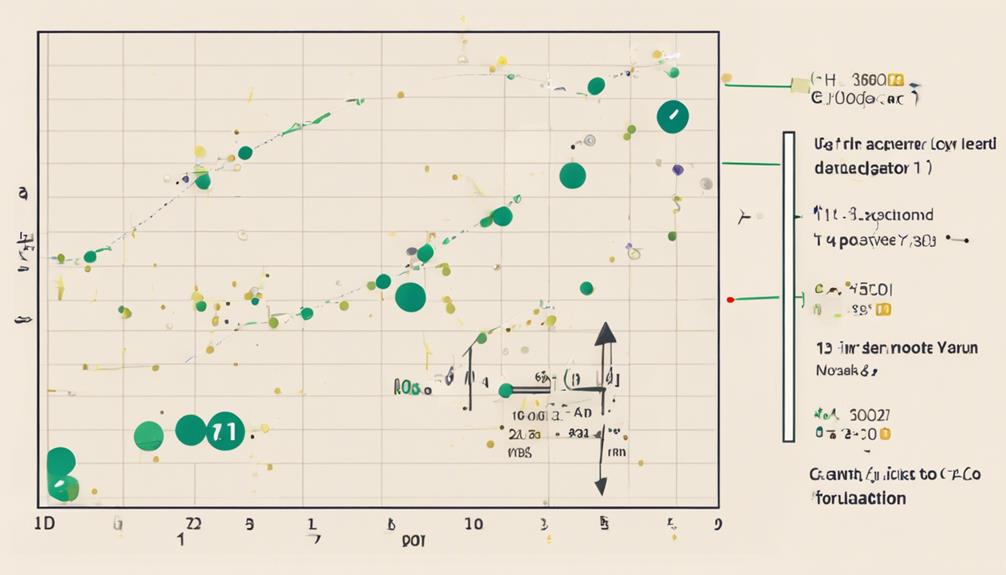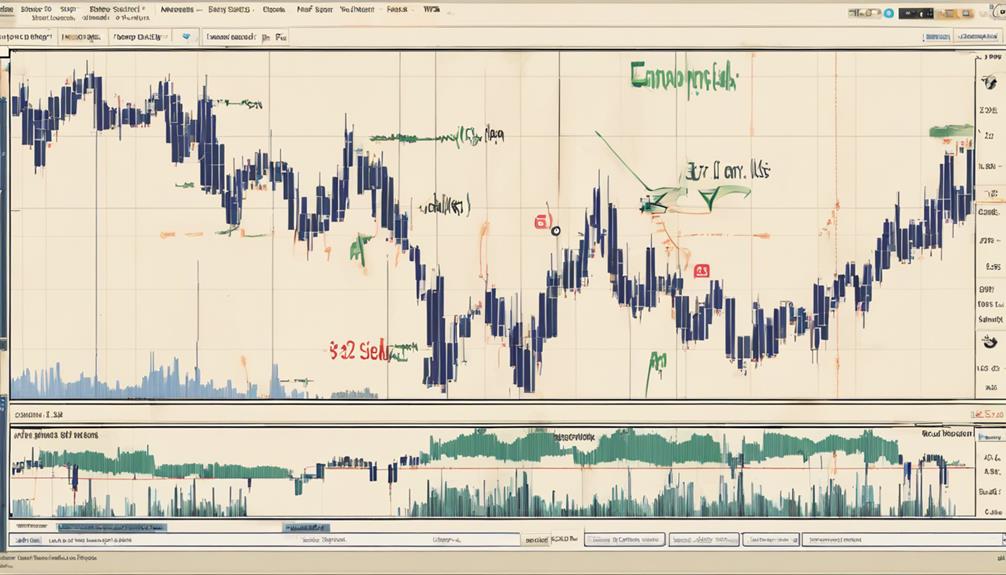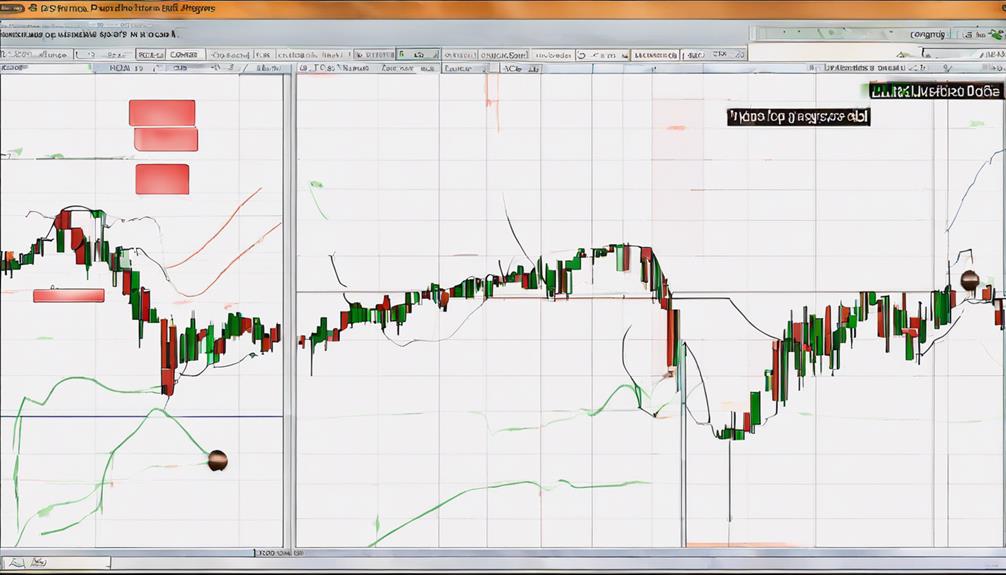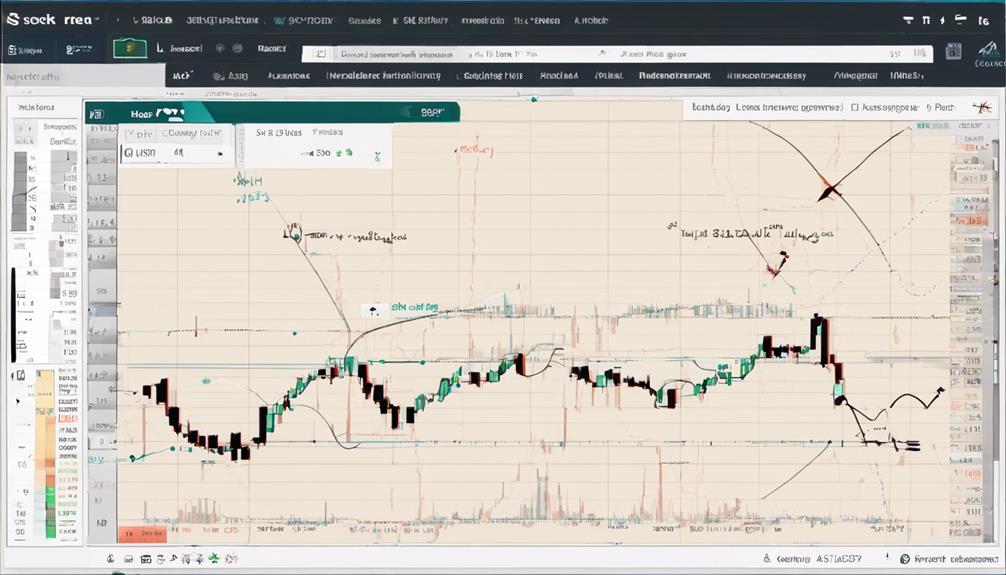The Parabolic SAR indicator, a popular tool in technical analysis, offers traders valuable insights into market trends and potential entry/exit points. Understanding its nuances, from the underlying formula to practical applications, can significantly enhance one's trading strategy.
However, grasping the full scope of this indicator requires a comprehensive guide that goes beyond surface-level explanations. By delving deeper into its intricacies, traders can unlock the true potential of the Parabolic SAR and leverage its signals effectively.
Parabolic SAR Indicator Definition and Purpose
The Parabolic SAR indicator, a pivotal component in technical analysis, serves as a dynamic tool for detecting potential trend reversals and generating strategic entry and exit points in financial markets. Developed by J. Welles Wilder, the Parabolic SAR, which stands for Stop and Reverse, is designed to provide traders with entry/exit signals based on the direction of the trend.
This indicator appears as dots on a chart, positioning below the price during upward trends and above during downward trends. Traders utilize the Parabolic SAR primarily in trending markets to set effective stop-loss orders, ensuring protection against adverse price movements.
Formula and Calculation of Parabolic SAR

Utilizing a dynamic mathematical framework, the Parabolic SAR indicator employs a formula integrating Extreme Point (EP) and Acceleration Factor (AF) to determine trend direction.
The calculation of Parabolic SAR involves deriving the EP, which is the highest high for an uptrend or the lowest low for a downtrend. The AF, starting at 0.02, increases by 0.02 until reaching a maximum of 0.2.
The indicator considers prior values and price movement over at least five periods to adjust the EP and AF accordingly.
The Rising and Falling Parabolic SAR formulas dictate the placement of dots above or below the price based on the prevailing trend direction.
Therefore, by dynamically adjusting based on price action, the Parabolic SAR indicator provides traders with a visual representation of potential trend reversals or continuations in the market.
Interpreting Parabolic SAR Signals

Moving from understanding the calculation of Parabolic SAR to interpreting its signals provides traders with actionable insights into market trends and potential entry or exit points. Parabolic SAR generates buy signals when the dots switch from above to below the price, indicating a potential bullish trend. Conversely, sell signals are triggered when the dots transition from below the price to above, signaling a possible bearish trend.
The indicator also offers stop-loss levels based on the positions of the dots, allowing traders to manage risk effectively. A new buy or sell signal is generated when the price intersects with the dots, offering opportunities for traders to enter or exit positions. Parabolic SAR is particularly effective in trending markets for reliable signal generation, making it a valuable tool for traders seeking to capitalize on price movements and make informed trading decisions.
Parabolic SAR Vs. Moving Average

Comparatively more responsive to price fluctuations, the Parabolic SAR indicator differs from the Moving Average in its ability to anticipate market reversals with heightened sensitivity. Parabolic SAR is designed to provide immediate signals by placing dots above or below the price, indicating potential trend changes.
In contrast, Moving Average calculates the average price over a specific period, smoothing out fluctuations and lagging behind current price action. This difference in methodology makes Parabolic SAR more suitable for trending markets where it can quickly identify potential reversals, while Moving Average is better suited for ranging markets where it can help confirm trends.
Traders looking for quick signals and a more dynamic response to price movements may prefer Parabolic SAR, whereas those seeking a more stable trend-following tool might opt for Moving Average. Understanding the strengths and weaknesses of each indicator can help traders make informed decisions based on the market conditions they are facing.
Limitations of Parabolic SAR Indicator

Constantly generating signals, the Parabolic SAR indicator exhibits limitations that traders must consider, particularly in low-quality trending conditions. When using Parabolic SAR, traders should be aware of the following limitations:
- False signals: Reversal signals may emerge without actual price reversals, potentially leading to misguided trading decisions.
- Sideways market: Parabolic SAR may not perform well in flat or ranging markets due to its continuous signal generation, resulting in numerous buy and sell signals with little price movement.
- Poor quality signals: Market chop or consolidation periods can trigger erratic signals, making it challenging to determine the true market direction accurately.
- Alternative indicators: To overcome the limitations of Parabolic SAR, traders can consider utilizing alternative indicators like TEMA, Donchian Channels, Ultimate Oscillator, and LWMA for more reliable trend analysis and entry/exit signals.
Can I Use the Parabolic SAR Indicator Without a Comprehensive Guide?
Yes, you can use the Parabolic SAR indicator without a comprehensive guide by following the 7 steps to use Parabolic SAR. These steps can help you understand how to interpret the indicator’s signals and incorporate it into your trading strategy effectively.
Frequently Asked Questions
What Are the Best Settings for Parabolic SAR Indicator?
To determine the best settings for the Parabolic SAR indicator, consider adjusting the Acceleration Factor (AF) based on timeframe and market conditions. Experiment with different AF values to optimize sensitivity to price movements, tailoring the indicator to specific trading strategies.
How Do You Read a Parabolic SAR Indicator?
To read a Parabolic SAR indicator, observe the dots' placement relative to price. A dot above signifies a bearish trend, while below indicates a bullish trend. When dots switch sides with price, a potential trend reversal is suggested.
What Is the Best Combination With Parabolic Sar?
When seeking the best combination with Parabolic SAR for trading decisions, the Moving Average Convergence Divergence (MACD) indicator is a favored choice. Its ability to validate signals from Parabolic SAR and offer insights on momentum and trend strength enhances overall strategy effectiveness.
What Is the Best Acceleration Factor for Parabolic Sar?
The optimal acceleration factor for Parabolic SAR depends on the trader's risk tolerance and market conditions. Typically, an AF of 0.02 is used for more conservative approaches, while a higher AF like 0.1 may suit those seeking quicker signals in volatile markets.
Conclusion
In conclusion, the Parabolic SAR indicator serves as a valuable tool for traders seeking to identify trends, potential reversals, and entry/exit points in the market. By understanding its formula, calculating methods, and interpreting signals, traders can make informed decisions.
Despite its limitations, the Parabolic SAR remains a popular choice due to its unique trailing stop and reverse method. Exploring its comparisons with moving averages and alternative indicators can further enhance trading strategies.
